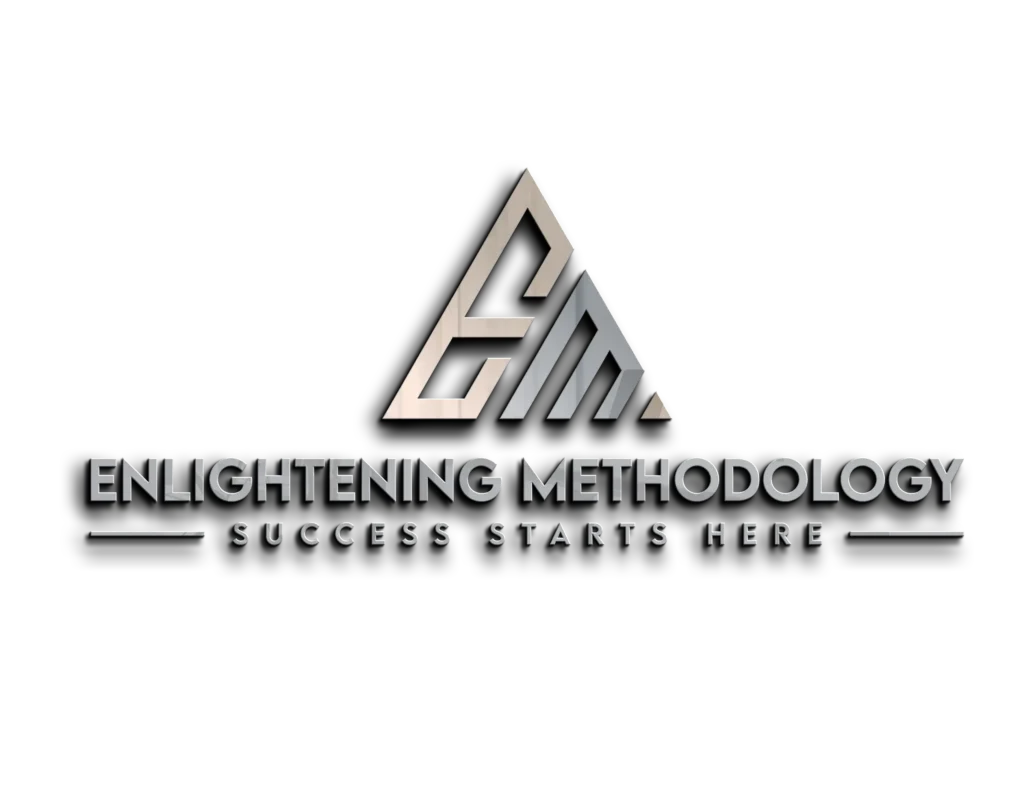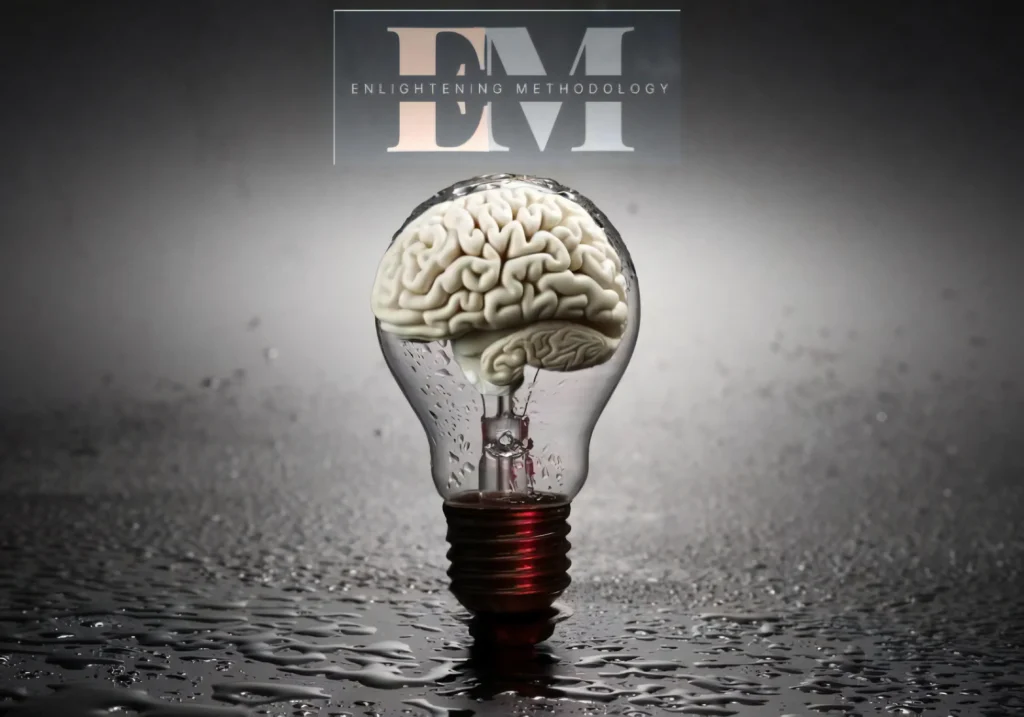Introduction
Establishing seamless connectivity between EHR/EMR platforms and revenue cycle management (RCM) systems enables healthcare organizations to optimize workflows, reduce claim denials, and strengthen financial performance. Disconnected clinical and billing workflows can delay payments, increase claim denials, and place additional burdens on staff.
A properly implemented EHR/EMR Integration with the RCM system ensures critical information like patient demographics, encounter notes, insurance details, procedure codes, and claims data moves seamlessly between systems. This automated flow of data reduces errors, accelerates billing cycles, and provides clinical and administrative staff with timely and accurate information. In practice, this means fewer rejected claims, faster reimbursements, and more time for clinicians to focus on patient outcomes rather than administrative tasks.
Healthcare providers can further enhance the success of EMR/EHR integration by leveraging services that guide them through workflow mapping, technology selection, data standardization, and staff training.
This guide outlines how to integrate EHR/EMR with RCM systems to streamline workflows, boost revenue efficiency, and strengthen compliance and data security.
Step-by-Step Implementation Guide
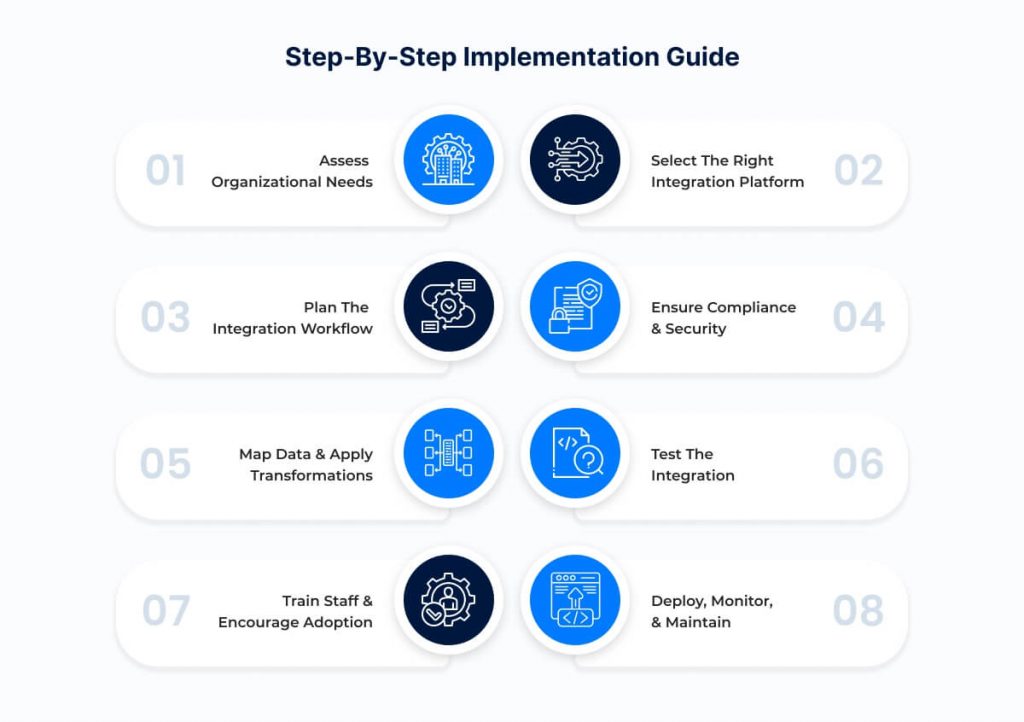
To achieve seamless integration and maximize efficiency, healthcare providers should follow a structured, step-by-step implementation process.
1. Assess Organizational Needs
- Define Goals: Identify the main objectives for integration, such as reducing claim denials, accelerating reimbursement, or minimizing manual billing tasks. Clear goals help in prioritizing workflows that will have the greatest impact on revenue and patient care.
- Identify Key Data: Determine the patient and clinical data that must be shared with the RCM system, including demographics, encounter details, insurance coverage, and procedural information. Ensuring all relevant data is captured prevents errors and claim rejections.
- Set Measurable Outcomes: Establish metrics to track the success of integration, such as claim approval rates, average reimbursement times, or reduction in administrative hours. This allows providers to quantify the benefits and ROI of the project.
2. Select the Right Integration Platform
- Evaluate Tools: Choose middleware or integration platforms that are compatible with existing EHR/EMR and RCM systems. These tools act as the backbone for reliable and secure data exchange.
- Assess Vendor Expertise: Verify that the vendor has experience with healthcare integrations and understands clinical and financial workflows. With strong vendor support, providers can reduce downtime and ensure smoother implementation.
- Consider Cost and Scalability: Integration should fit within the practice’s budget while supporting growth. Scalable solutions can accommodate future expansion, such as the addition of new clinics or EHR modules, ensuring seamless growth.
3. Plan the Integration Workflow
- Define Scope: Prioritize workflows that deliver immediate benefits, such as claims submission or patient demographics. Additional processes, such as automated denials or remittance posting, can be phased in later.
- Sequence Data Flow: Map the order in which data should be transferred between EHR and RCM to avoid disruptions in billing and clinical documentation.
- Select Integration Approach: Decide between a direct connection or a middleware-based solution. Middleware platforms often provide better error handling, scalability, and support for multi-site practices.
4. Ensure Compliance and Security
- Implement Encryption: Protect patient and financial data both in transit and at rest, which is critical for safeguarding sensitive information.
- Enforce Access Controls: Apply secure authentication protocols and user permissions to ensure only authorized personnel can access specific data.
- Maintain Regulatory Compliance: Ensure the integration aligns with HIPAA regulations and your practice’s internal security policies. Non-compliance can result in penalties and damage to patient trust.
5. Map Data and Apply Transformations
- Field Mapping: Carefully align critical data fields during the integration process, including patient IDs, diagnosis and procedure codes, and insurance details. Accurate mapping ensures claims are processed correctly and without errors.
- Data Transformation: Convert and standardize data formats to ensure both systems interpret the information correctly, thereby preventing miscommunication between clinical and financial records.
- Document Mapping: Maintain thorough documentation to support audits, troubleshoot errors, and simplify updates when payer requirements or codes change.
6. Test the Integration
- Unit and End-to-End Testing: Validate individual components and the entire workflow to ensure that all data transfers are processed correctly.
- Pilot Programs: Run tests with a small dataset before full deployment to ensure optimal performance and reliability. This allows you to identify issues without affecting real patient care or billing.
- Refine Workflows: Resolve discrepancies and verify that automated claims, remittance posting, and denial management are functioning correctly before going live.
7. Train Staff and Encourage Adoption
- Provide Workflow Training: Educate clinicians, billers, and administrative staff on new workflows and system features to ensure seamless integration and effective use of the system. Proper training reduces errors and increases adoption rates.
- Clarify Roles and Responsibilities: Ensure each team member understands how the integration affects their daily tasks, from entering patient data to reviewing claims.
- Support Adoption: Gather feedback, address concerns, and provide continuous guidance to ensure staff feel confident using the integrated system.
8. Deploy, Monitor, and Maintain
- Phased Rollout: Introduce the integration gradually, starting with a limited workflow or patient population. This reduces risk and allows adjustments before full deployment.
- Monitor Key Metrics: Track KPIs such as claim submission rates, denial percentages, and payment timelines to evaluate the effectiveness of integration.
- Ongoing Maintenance: Regularly update mappings, reconcile data, and utilize vendor support to address issues promptly. Continuous monitoring ensures long-term efficiency, accuracy, and adherence to compliance standards.
A 2025 Experian Health report found that 41% of providers face claim denial rates of 10% or more. This highlights how fragmented billing and documentation processes directly affect revenue recovery. Once implementation is underway, healthcare organizations may encounter several integration challenges that require careful attention and proactive solutions.
Common Challenges and Solutions
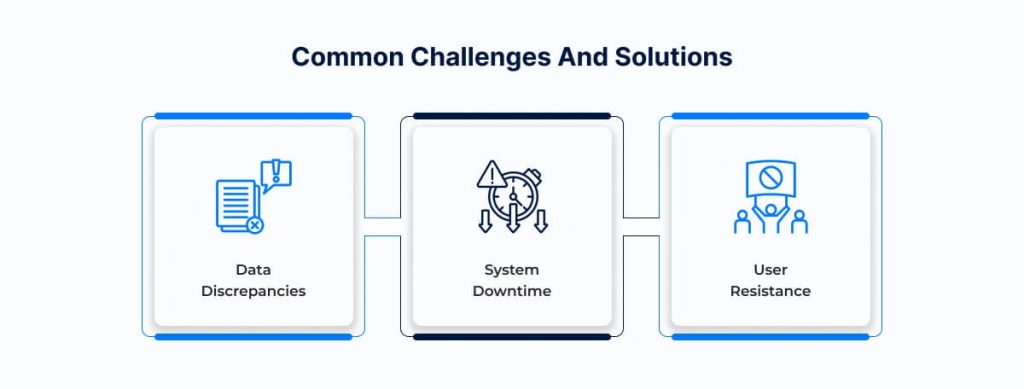
- Data Discrepancies
Incorrect or incomplete information, such as insurance errors at registration, can lead to claim denials. EHR RCM services with automated validation checks catch errors before submission, improving billing accuracy and revenue cycles. - System Downtime
Integration during peak hours can disrupt operations. Schedule implementation during low-traffic periods and maintain backup procedures to avoid workflow interruptions. - User Resistance
Staff may resist new workflows. Engage teams early, provide ongoing support, and demonstrate real-world efficiency improvements to encourage adoption and drive adoption.
Understanding the Integration Landscape
Role of EHR/EMR in RCM
EHR/EMR systems store comprehensive patient health information, including medical history, diagnoses, medications, allergies, treatment plans, immunization records, lab results, and radiology images. Integrating this clinical data with RCM platforms ensures accurate billing and coding, reduces claim denials, and improves reimbursement timelines.
Without integration, critical billing data may be delayed or entered incorrectly, which can impact cash flow and patient satisfaction.
Benefits of Integration
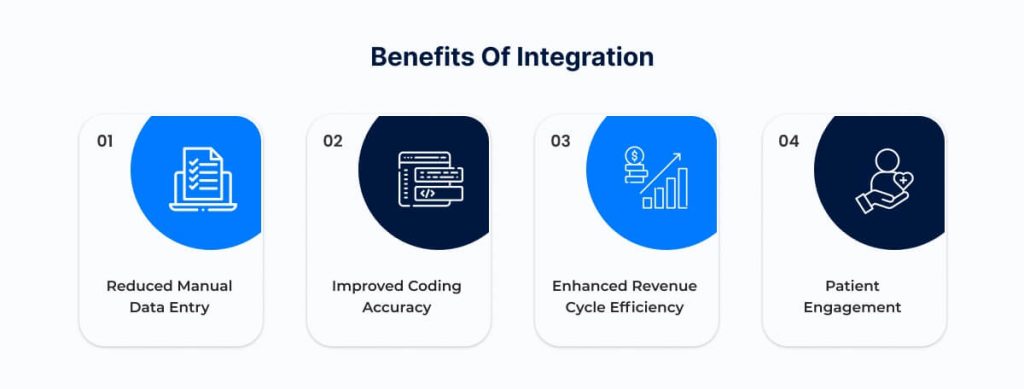
- Reduced Manual Data Entry: Manual entry increases the likelihood of errors. Integrating EHR and RCM eliminates duplicate work, saves staff time, and ensures claims are submitted accurately.
- Improved Coding Accuracy: With real-time updates from the EHR, billing codes are automatically updated to reflect clinical documentation. This supports compliance, reduces errors, and ensures accurate reimbursements.
- Enhanced Revenue Cycle Efficiency: Streamlined workflows enable faster claim submissions, reduce denials, and improve cash flow. Administrative teams spend less time troubleshooting and more time on tasks that improve patient care.
- Patient Engagement: Integrated systems enable patients to access their health records, billing information, and appointments through mobile apps that integrate EHR/EMR and RCM billing. This transparency improves patient engagement and empowers patients to participate actively in their care.
Key Considerations Before Integration
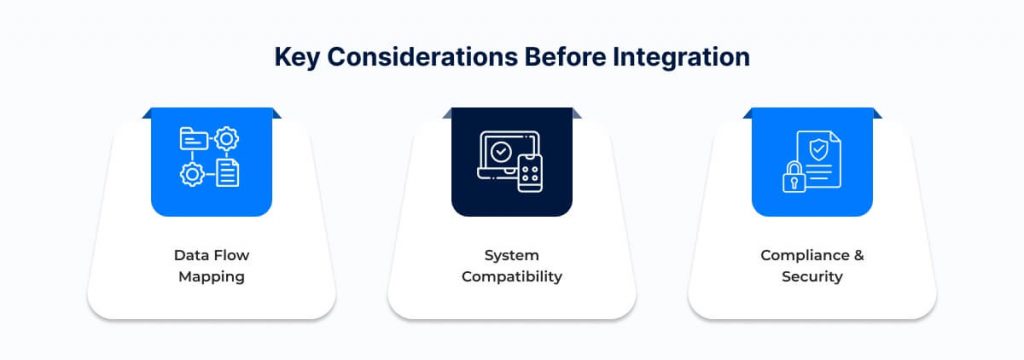
Here are the key factors that healthcare providers must address before initiating integration. Addressing these factors early ensures a smooth, secure, and effective implementation.
- Data Flow Mapping: Before integration, healthcare providers must map the flow of patient information between EHR and RCM systems. This includes identifying where data originates, how it is processed, and where it is used for billing or reporting purposes. Mapping helps identify bottlenecks, prevent errors, and ensure that clinical documentation, billing, and claims are accurately synchronized.
- System Compatibility: Not all systems communicate seamlessly. Ensure your EHR and RCM platforms support standards like HL7, FHIR, or CCD. Compatibility ensures smooth integration, reduces technical issues, and allows staff to focus on patient care rather than troubleshooting.
- Compliance and Security: A secure integration framework must adhere to HIPAA-compliant software development practices, including encryption, access controls, and regular security audits. This ensures data privacy, reliable automation, and continued patient trust.
Best Practices for Successful Integration
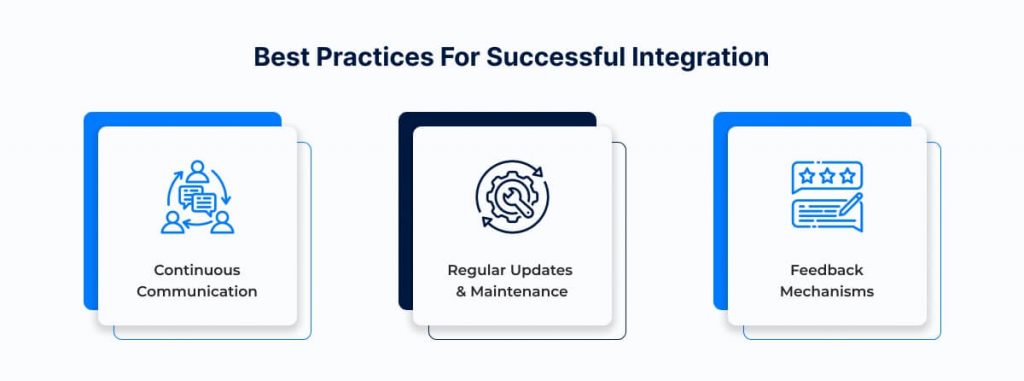
To maximize adoption and performance, healthcare providers should follow these best practices.
- Continuous Communication: Maintain open lines between IT, clinical, and administrative teams. Regular updates and check-ins ensure alignment, allow rapid issue resolution, and support smooth operations.
- Regular Updates and Maintenance: Keep EHR RCM integration software up to date and monitor its performance. Regular maintenance prevents errors, ensures smooth workflows, and allows staff to focus on patient care.
- Feedback Mechanisms: Gather feedback from staff and patients to identify pain points and optimize workflows. Understanding daily impacts improves adoption and ensures the system supports clinical and administrative needs.
Conclusion
EHR/EMR Integration with RCM system transforms the way healthcare organizations operate. By enabling seamless data transfer, it significantly improves billing accuracy, reduces errors, and ensures claims are processed efficiently. At the same time, streamlined workflows enhance reimbursement, accelerating claim submissions, minimizing denials, and improving overall cash flow. Beyond financial gains, automation and integration promote operational efficiency, enabling staff to concentrate on patient care and higher-value tasks rather than repetitive administrative work.
When integrated with mHealth solutions and remote patient monitoring, these systems extend efficiency beyond the clinic. Providers gain real-time access to patient data, streamline remote monitoring, and strengthen patient engagement. With the right technology and support, such as OSP’s custom healthcare software solutions, EHR/EMR-to-RCM integration services, and healthcare interoperability solutions, organizations can establish a connected, accurate, and patient-centered workflow that facilitates informed clinical decisions and fosters long-term operational success.
References
- http://www.enter.health/post/unlocking-the-power-of-ehr-key-benefits-for-revenue-cycle-management
- http://gebbs.com/blog/ehr-integration-and-its-role-in-streamlining-rcm/
- http://www.mdclarity.com/blog/healthcare-rcm-platform
- http://www.billingparadise.com/blog/hospitals-improve-revenue-through-ehr-rcm-integration/
- http://www.jorie.ai/post/the-impact-of-electronic-health-records-on-revenue-cycle-managementhttp://trubridge.com/resources/how-to-improve-revenue-cycle-management-through-ehr-integration/
The post How to Implement EHR/EMR Integration with Your RCM System appeared first on Osplabs.
